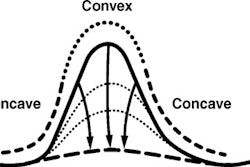
LONDON (Reuters), May 29 - A new imaging technique that relies on naturally occurring baking soda in the body could help pinpoint cancer earlier and quickly gauge if drugs to kill tumors are working, British researchers said on Wednesday.
The noninvasive method uses magnetic resonance imaging to measure changes in pH -- or acidity -- in tissue that is often the hallmark of cancer and other conditions such as heart disease and stroke, said Kevin Brindle of the University of Cambridge, who led the study.
Currently there are no safe ways to measure pH levels in humans, but doing so is important because tumors, for example, are far more acidic than surrounding tissue.
"You are imaging not just tissue structure but tissue function," said Brindle, whose study is published in the journal Nature. "We wanted to measure tissue pH, which is a surrogate for disease."
The researchers injected mice with a tagged form of bicarbonate -- an alkali more commonly seen in baking soda -- that occurs naturally in the body and balances acidity, Brindle said.
They used MRI to see how much of the tagged bicarbonate was converted into carbon dioxide within the tumor. In more acidic tumors, more bicarbonate is converted into carbon dioxide.
The researchers measured pH levels using an emerging technique called dynamic nuclear polarization that boosts MRI sensitivity more than 10,000 times.
The method developed by GE's GE Healthcare unit involves cooling down molecules to near absolute zero and then warming them up quickly -- a process that keeps them polarized and easier to detect as an image.
"MRI can pick up on the abnormal pH levels found in cancer, and it is possible that this could be used to pinpoint where the disease is present and when it is responding to treatment," Brindle said.
The next step is testing the technique in humans in early stage clinical trials expected to start in 2009, he added in a telephone interview.
While this makes use in clinics years away, the technique could one day help quickly determine if cancer drugs are working, he said. Normally, it takes weeks or months to do this.
"If you could see a change in tissue function, you could see if a drug is working earlier," Brindle said. "If not, you could try a different drug."
By Michael Kahn
Last Updated: 2008-05-28 15:09:36-0400 (Reuters Health)
Related Reading
Perfusion MRI can predict progression of gliomas, April 30, 2008
Copyright © 2008 Reuters Limited. All rights reserved. Republication or redistribution of Reuters content, including by framing or similar means, is expressly prohibited without the prior written consent of Reuters. Reuters shall not be liable for any errors or delays in the content, or for any actions taken in reliance thereon. Reuters and the Reuters sphere logo are registered trademarks and trademarks of the Reuters group of companies around the world.


















